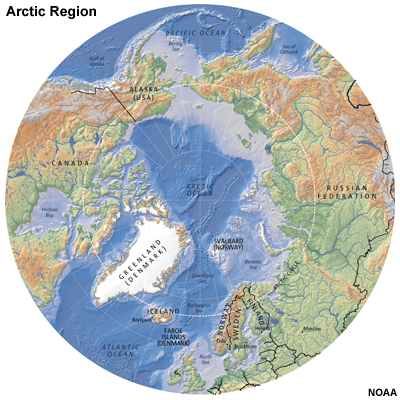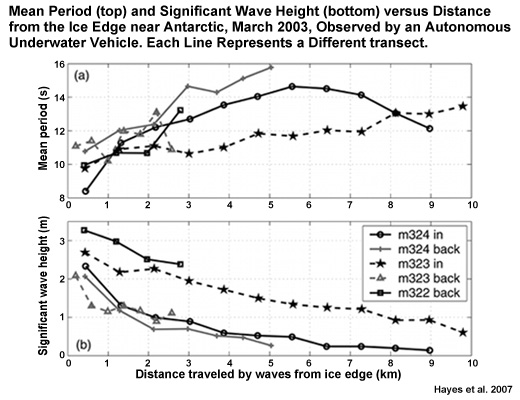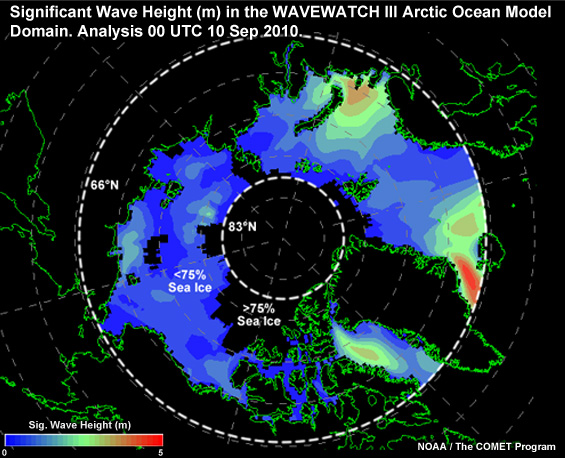Table of Contents
Waves
WavesArctic Waves
In open water, waves in the Arctic behave like any other wave: waves are a function of wind speed, duration, and fetch. Arctic cyclones generate large waves, particularly in the right-front quadrant of their path.

Vast portions of the Arctic have very shallow bathymetry, particularly north of Eurasia. Waves generated in these areas tend to be steep and choppy. Arctic waves don't tend to be far-travelled like waves in other oceans – permanent sea ice around the North Pole blocks long propagation paths. Thus, the Arctic does not experience the very long period swell seen in other oceans.
WavesSea Ice
Mean Period (top) and Significant Wave Height (bottom) versus Distance from the Ice Edge near AntArctic, March 2003, Observed by an Autonomous Underwater Vehicle. Each Line Represents a Different transect. Credit: Hayes et al. 2007

Sea ice profoundly affects waves in the Arctic. First, waves don't form in sea ice, unless there is significant open water. Second, waves approaching the ice from open water decay quickly after entering the Marginal Ice Zone (MIZ, usually defined as an ice concentration greater than 15%). The rate of decay is exponential and depends on the frequency of the waves and the size and concentration of ice floes. Shorter period waves decay faster than longer period ones. As a rough guide, the height of waves with an 8-9 second period will halve every 1-4 km into the MIZ.
WavesOperational Wave Products

NCEP forecasts waves in the Arctic using the WAVEWATCH III model. The model domain extends north to 83°N and includes satellite-derived ice concentration data for wave propagation. This plot shows an example of significant wave height in the Arctic Ocean model domain.
WavesQuestions
Question 1
The Arctic does not experience the very long period swell seen in other oceans. Which of the following factors contribute to this? (Choose all that apply.)
The correct answers are a), Large areas with shallow bathymetry and b), Permanent sea ice around the North Pole.
While Arctic cyclone are strong enough and long-lived enough to generate large waves, shallow bathymetry in large areas north of Eurasia prevents the growth of long wave lengths due to bottom friction. Also, permanent sea ice blocks long propagation paths, required to develop long-period swell. While the Coriolis force increases at high latitudes, it isn't a factor in developing long-period swell.
Question 2
[True/False] When waves enter the marginal ice zone, longer period waves decay faster than shorter period ones.
The correct answer is False.
Shorter period waves decay faster than longer period waves. The rate of decay is exponential and depends on the frequency of the waves and the size and concentration of ice floes.